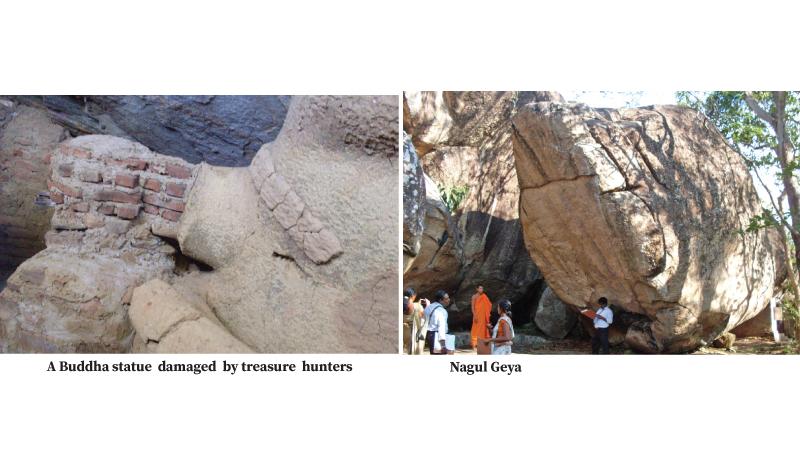
Nuwarakanda Raja Maha Vihara is an ancient temple in Wariyapola in the Kurunegala district.
The temple was built by the regional King Soorathissa, who was a brother of King Devanampiyathissa (251-210 A.D.). The king had requested Soorathissa to host 32 Arahants from Anuradhapura. He has prepared 32 caves for the bhikkhus to live at the location.
Most of the caves are still undiscovered, hidden in the jungles.
It is believed that King Walagamba took refuge in this temple while fleeing from the South Indian invasion in 104B.C. and completed the temple which was initially built by king Soorathissa. There had been an underground tunnel from the temple to the nearby Wewala ancient temple. At present the entrance to the tunnel has been sealed and a stupa has been built in front of it.
It is said that there had been a stupa in the shape of Sanchistupa, which is believed to be the third oldest stupa in Sri Lanka. But no indication of the stupa remains today.
A few stone pillars marked with the sun and the moon, used as a lamp stands can be found in the temple premises.
Statues of the temple are made of rice husk or chaff (Dahaiya). These are extremely rare to find and are said to have been made by a mixture of rice husk in clay, Kurumba water and Goraka (Red mango) juice. These statues have been subject to vandalism by treasure hunters.
Another building of importance in the temple premises is the “Nagul Geya” built in a rock cave. It is believed that this was used by the forces of King Walagamba as a weapon storage possibly during his campaign to oust the invaders.

